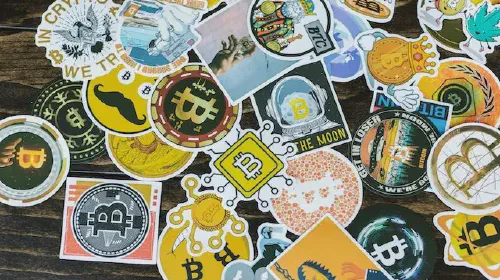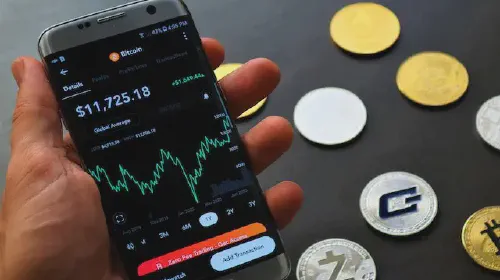The History Of The Onecoin Cryptocurrency - Rise, Controversies, and Downfall
Salomon Kisters
Aug 8, 2023This post may contain affiliate links. If you use these links to buy something we may earn a commission. Thanks!
The Onecoin cryptocurrency, also known as OneLife Network, has gained significant attention and controversy in the world of digital currencies.
In this blog post, we will explore the fascinating history of Onecoin, from its inception to its rise and eventual fall.
By the end of this article, you will have a thorough understanding of the key events and factors that shaped the trajectory of this cryptocurrency.
The Birth of Onecoin
In 2014, Onecoin was introduced to the world by Ruja Ignatova, a Bulgarian entrepreneur. Ignatova claimed that Onecoin was a revolutionary digital currency that would surpass Bitcoin in terms of adoption and usability.
She pitched Onecoin as an investment opportunity, promising enormous returns to early investors. This initial promise, coupled with the growing interest in cryptocurrencies during the time, attracted a significant following towards Onecoin.
A Network of Enthusiasm
To promote the adoption of Onecoin, Ignatova established a multi-level marketing (MLM) system called the OneLife Network. This network relied on a pyramid-like structure, where members could earn commissions by recruiting new participants and selling educational packages related to cryptocurrency.
By leveraging the enthusiasm of its network, Onecoin quickly gained momentum and expanded its presence in various countries worldwide.
Controversy and Criticisms
Despite its rising popularity, Onecoin faced numerous controversies and criticisms. From the outset, many experts and government authorities raised concerns regarding its legitimacy and potentially fraudulent nature.
Government bodies in several countries, including Germany and Belgium, issued official warnings against investing in Onecoin. They highlighted the lack of transparency, dubious business practices, and the absence of a real blockchain as red flags.
The Ponzi Scheme Unveiled
In 2017, the Onecoin operation faced a significant setback when Ruja Ignatova disappeared, leaving behind a trail of unanswered questions and investigations. This incident triggered a series of events that exposed Onecoin as a sophisticated Ponzi scheme.
It was revealed that Onecoin had no actual blockchain, and the digital currency was never traded on any reputable cryptocurrency exchange. The promised returns were paid out using new investments, while the company amassed an estimated $4.4 billion before its ultimate downfall.
Global Investigations and Legal Action
As the true nature of Onecoin unraveled, global investigations were launched to bring the perpetrators to justice. Multiple countries, including the United States, United Kingdom, and Germany, initiated legal actions against key individuals involved in the operation.
Arrests were made, assets were seized, and lawsuits were filed, as the victims sought to recover their lost investments. The unraveling of the Onecoin scam represents one of the largest cryptocurrency frauds in history.
Lessons Learned
The rise and fall of Onecoin serve as a cautionary tale for the cryptocurrency industry and potential investors. It highlights the importance of thorough due diligence before engaging in any investment opportunity.
The lack of a transparent and auditable blockchain should raise serious concerns for any individual considering involvement in a cryptocurrency project. One must also remain skeptical of promises that seem too good to be true, especially when they center around extraordinary returns on investment.
Moving Forward
The Onecoin debacle has undoubtedly shaken the faith of many in the cryptocurrency world. However, it also serves as a valuable lesson on the resilience and adaptability of the broader blockchain and cryptocurrency ecosystem.
It reminds us that innovation and integrity are crucial when considering investment opportunities in this rapidly evolving industry. By learning from past mistakes and holding all projects to high standards, we can contribute to the growth of legitimate and trustworthy cryptocurrencies.
Conclusion
In conclusion, the history of Onecoin is a tale of ambition, deception, and the perils of blind trust. From its promising beginnings to its devastating downfall, the Onecoin cryptocurrency faced numerous obstacles and ultimately exposed its fraudulent nature.
As we move forward, it is essential to remain vigilant, exercise caution, and hold cryptocurrencies to rigorous standards. By doing so, we can foster a more trustworthy and sustainable future for the world of digital currencie
Stay informed with the latest insights in Crypto, Blockchain, and Cyber-Security! Subscribe to our newsletter now to receive exclusive updates, expert analyses, and current developments directly to your inbox. Don't miss the opportunity to expand your knowledge and stay up-to-date.
Love what you're reading? Subscribe for top stories in Crypto, Blockchain, and Cyber-Security. Stay informed with exclusive updates.
Please note that the Content may have been generated with the Help of AI. The editorial content of OriginStamp AG does not constitute a recommendation for investment or purchase advice. In principle, an investment can also lead to a total loss. Therefore, please seek advice before making an investment decision.

Disruption in Banking: The Rise of Digital Payments - Implications, Challenges, and Opportunities
Learn about the impact of digital payments on the banking industry, from challenges to opportunities. Explore the future of finance in the era of digital transactions.

What is a Bitcoin Receipt?
A Bitcoin receipt confirms that a payment was received by the owner linked to that specific transaction. This may be a physical ticket..

Avalanche vs. Solana: A Comparison of Two Emerging Blockchains
Avalanche and Solana are both emerging blockchains with unique features. Avalanche offers compatibility with Ethereum and lower fees, while Solana boasts faster transactions and cheaper costs.
Protect your documents
Your gateway to unforgeable data. Imprint the authenticity of your information with our blockchain timestamp